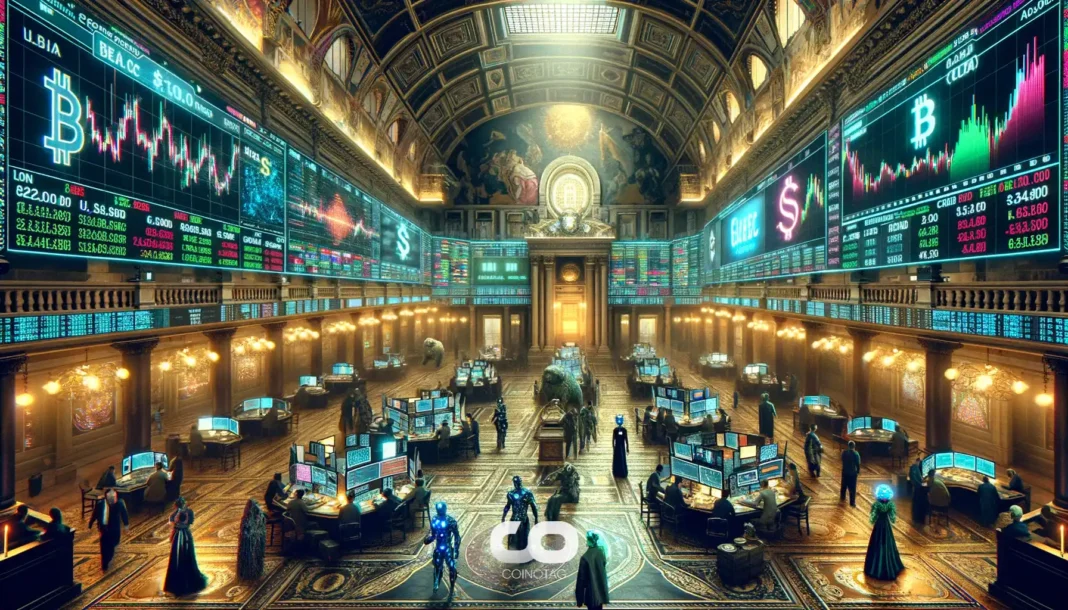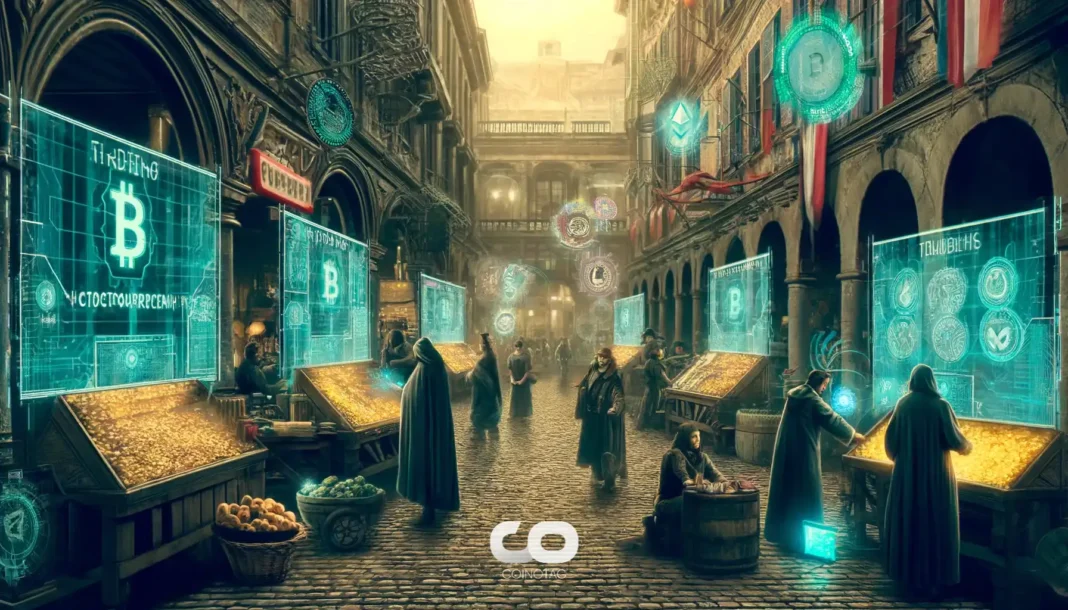Bitcoin Asia has launched a pioneering art gallery in Hong Kong that merges Bitcoin’s technological innovation with contemporary art, featuring digital and physical works transacted exclusively in Bitcoin, signaling a new era for crypto culture and value.
-
Bitcoin Asia Art Gallery debuts with over a dozen international artists, including UK’s Robert Alice, showcasing Bitcoin code-inspired artworks.
-
The exhibition features a large-scale digital LED wall and physical gallery space, with all sales priced in Bitcoin, reflecting a shift in art market dynamics.
-
Curator Dennis Koch highlights Bitcoin’s unique scarcity and transparency as key drivers reshaping art valuation and collecting practices worldwide.
Bitcoin Asia unveils a landmark art gallery in Hong Kong, blending crypto innovation with culture. Explore Bitcoin-inspired art and new value models today.
How Bitcoin Asia’s Art Gallery Is Redefining Crypto and Culture
The Bitcoin Asia Art Gallery in Hong Kong represents a transformative moment where Bitcoin’s blockchain technology intersects with contemporary art. Featuring works by renowned artists like Robert Alice, the gallery explores themes of value, code, and ownership through both digital and physical media. This innovative space includes Asia’s first large-scale digital LED wall dedicated to Bitcoin-native art, alongside a traditional gallery setting. All transactions are conducted exclusively in Bitcoin, emphasizing the cryptocurrency’s growing role as a medium of exchange and store of value within the art world.
What Makes Bitcoin Asia’s Exhibition Unique in the Global Art Market?
Bitcoin Asia’s exhibition stands out by integrating Bitcoin-denominated sales with a curated selection of artworks that embody the cryptocurrency’s ethos. With over 100 BTC in sales facilitated since 2019 through related art programs, the gallery reflects a broader market trend where traditional auction houses face declining sales. In 2024, global fine art sales dropped 27% to $10.2 billion, while digital platforms now account for 72% of collector purchases. This shift underscores a paradigm change as collectors seek transparency, fewer intermediaries, and innovative valuation models enabled by Bitcoin.
Who Are the Key Contributors and Curators Behind Bitcoin Asia?
The gallery features international artists from Hong Kong, Japan, Spain, Germany, the UK, and the US, with notable contributions from Robert Alice, whose “Portraits of a Mind” series encodes Bitcoin’s first 12.3 million digits. Harvard professor Scott Kominers also debuts a generative art installation inscribing the digits of π onto Bitcoin Ordinals. Curated by Dennis Koch, an expert in Bitcoin-focused art exhibitions, and Guoying Stacy Zhang, an art historian with deep expertise in Buddhist and contemporary art, the gallery bridges traditional cultural heritage with cutting-edge crypto art.
How Is Bitcoin Changing the Future of Art Collecting?
Bitcoin introduces a new foundation for art valuation based on its inherent scarcity and decentralized nature. Unlike fiat currencies or traditional assets, Bitcoin’s fixed supply creates a unique store of value. Industry leaders like Michael Saylor emphasize Bitcoin’s scarcity as unparalleled. This shift challenges auction houses to adapt beyond superficial bidding tools, as Bitcoin-denominated sales offer enhanced transparency and align incentives between artists, collectors, and platforms. The rise of galleries earning under $250K annually and the retreat of major art fairs signal a recalibration of the art ecosystem driven by digital innovation.
| Art Market Segment | 2024 Sales (USD) | Year-over-Year Change |
|---|---|---|
| Global Fine Art Sales | $10.2 Billion | -27% |
| Blue-Chip Works ($10M+) | $2 Billion Shortfall | Decline |
| Digital Platform Sales | 72% of Collectors | Growth |
What Are the Cultural Implications of Bitcoin Asia’s Exhibition?
The exhibition signals a cultural shift where Bitcoin is not only a financial asset but a catalyst for new artistic expression and cultural diplomacy. A fireside chat between former Sotheby’s CEO Tad Smith and Swiss diplomat Dr. Uli Sigg will explore evolving valuation models and the role of cultural exchange. This dialogue highlights how Bitcoin-native art challenges traditional notions of ownership and value, fostering a global community that embraces open-source principles and sound money.
What Role Do Ordinals and Generative Art Play in the Exhibition?
Bitcoin Asia features pioneering Ordinals projects like OnChainMonkey and Bitcoin Puppets, which bring unique narratives to the crypto art movement. Scott Kominers’ generative art series “Pidentities” inscribes infinite digits of π onto Bitcoin, creating a layered, on-chain puzzle. These works exemplify how blockchain technology enables new forms of provenance, identity, and interactivity, expanding the boundaries of art beyond physical media.
Frequently Asked Questions
What is the Bitcoin Asia Art Gallery?
The Bitcoin Asia Art Gallery is a museum-scale exhibition in Hong Kong showcasing digital and physical artworks inspired by Bitcoin, with all sales conducted in Bitcoin to promote crypto culture.
How does Bitcoin influence art valuation?
Bitcoin’s fixed supply and decentralized nature introduce scarcity and transparency, reshaping how art is valued and sold, moving away from traditional fiat-based auction models.
Who are the key artists featured at Bitcoin Asia?
Notable artists include Robert Alice, known for encoding Bitcoin’s code in art, and Scott Kominers, who creates generative art using Bitcoin Ordinals technology.
Key Takeaways
- Bitcoin Asia Art Gallery: A pioneering exhibition merging Bitcoin technology with contemporary art in Hong Kong.
- Market Shift: Traditional auction houses face declines while Bitcoin-denominated sales and digital platforms rise.
- Cultural Impact: The gallery fosters new valuation models and global cultural dialogue grounded in Bitcoin’s principles.
Conclusion
The Bitcoin Asia Art Gallery marks a significant evolution in how Bitcoin influences both finance and culture, demonstrating the cryptocurrency’s role as a new medium for artistic expression and value exchange. As the art world recalibrates, Bitcoin’s transparency and scarcity offer a compelling alternative to traditional models, inviting collectors and creators to embrace a future shaped by open-source innovation and sound money principles.







